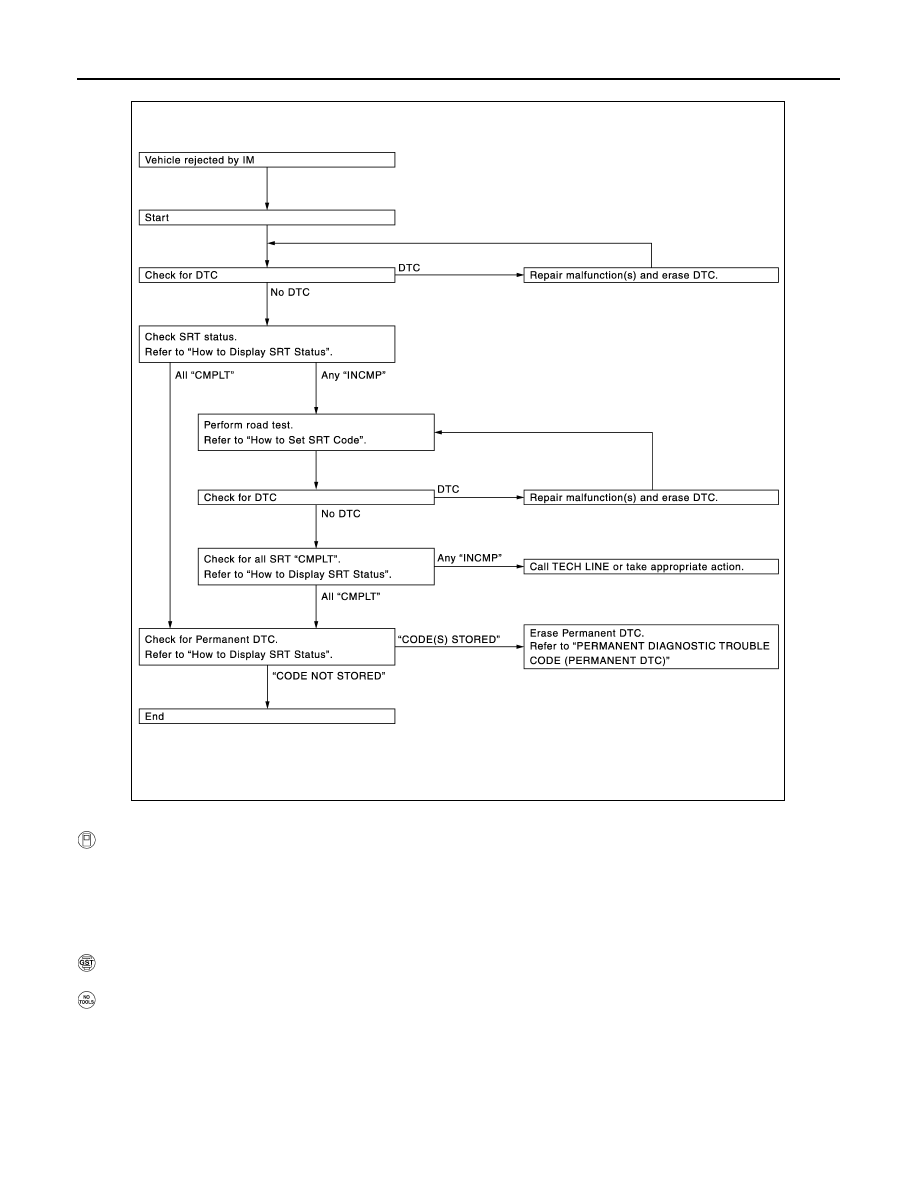Nissan Pathfinder (2010 year). Manual - part 297

EC-468
< ECU DIAGNOSIS >
[VQ40DE]
ECM
How to Display SRT Status
WITH CONSULT-III
Selecting “SRT STATUS” in “DTC CONFIRMATION” mode with CONSULT-III.
For items whose SRT codes are set, “CMPLT” is displayed on the CONSULT-III screen; for items whose SRT
codes are not set, “INCMP” is displayed.
NOTE:
• Though displayed on the CONSULT-III screen, “HO2S HTR” is not SRT item.
• “SRT STATUS” provides the presence or absence of permanent DTCs stored in ECM memory.
WITH GST
Selecting Service $01 with GST (Generic Scan Tool)
NO TOOLS
A SRT code itself cannot be displayed, however SRT status can.
1. Turn ignition switch ON and wait 20 seconds.
2. SRT status is indicated as shown below.
• When all SRT codes are set, MIL illuminates continuously.
JSBIA0065GB
2010 Pathfinder